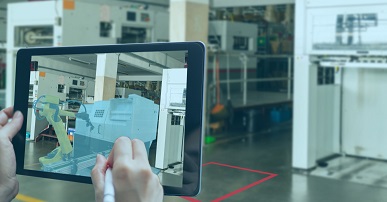The marine industry is benefiting from remote monitoring and connected sensors to provide data for preventing failures
Reducing downtime owing to machine faults and breakdowns is important for all industries, but with marine equipment typically being in a remote location, there are difficulties in reacting in a timely manner when a machine failure occurs, according to Steve Ellis, Managing Director of FPE Seals.
For this reason, predictive maintenance, where data analysis is used to detect potential defects before a mechanical failure occurs, is seen in the industry as the way forward.
The overall aim of predictive maintenance is to pinpoint potential faults in machinery at the earliest opportunity, with the goal of removing the need for more complex maintenance, repairs and even replacement.
Monitoring tactics allow potential failures to be spotted, and the part repaired or replaced before a full breakdown occurs. Predictive maintenance is more effective and efficient when used to monitor machinery or equipment that is more prone to breakdown. For example, older machinery or machinery that is critical to the output of the company.
Downtime Reduction
Downtime in any industry is costly to the bottom line while there is a wait for repairs to be completed or a replacement to arrive, not to mention any further time required for installation and training on the new machinery.
The importance of reducing downtime is particularly prevalent in the marine industry due to the often remote and inaccessible locations that are used. This often makes repairs time-consuming and costly.
By having predictive maintenance in place, engineers can plan and replace anything effectively, rather than be forced to react at the last minute when something goes wrong. With travel from engineers often over large distances involving air travel, downtime can be lengthy and be very costly to the business.
Remote condition monitoring
Using predictive maintenance will enable the scheduling of corrective maintenance when it is easier for it to take place. Having a way of predicting a failure on board a ship ensures that repairs or replacement parts can be installed before the vessel reaches open water – where it would be significantly more difficult.
This saves time, money and impacts on the health and safety of the workforce on board, as they are not entering operations with a potentially faulty machine or piece of equipment. Replacing valves, cylinders, or integral parts such as hydraulic cylinder parts needs to be conducted as efficiently as possible.
Generally, predictive maintenance enables a more efficient way of working. Avoiding last-minute changes because of breakdowns is just a better way for an organisation to operate.
Of course, not everything is predictable – the nature of the marine industry means that extreme, unforeseen weather can occur and cause problems that were very difficult to predict or make contingency plans for.
Despite this, the ability to foresee problems and solve them before they become a huge issue is one that certainly improves business efficiency.
Connected Sensors
The Industrial Internet of Things (IIoT) has played a significant role in enabling the monitoring of remote assets even in typically harsh marine environments with poor connectivity. The use of robust sensors that can withstand the rigours of industrial and marine conditions are typically being used for offshore monitoring with the data that’s acquired stored locally before being transmitted to cloud servers in bursts during network availability for analysis.
Maintenance engineers can then predict servicing requirements and monitor critical parameters to judge whether processes are operating within their normal limits and whether those limits are being approached, signalling the need for imminent intervention.
- UK manufacturing steps up to COVID-19 crisis - April 2, 2020
- Clustering Innovation - March 12, 2020
- A Global Monitor - March 6, 2020

